Scoring dog body condition
- Body condition score assesses visible body fat coverage and aims to indicate nutritional status of the dog. It does not assess body shape, coat condition nor presence of injuries – these should be considered distractors during assessment of body condition score.
- Ideally dogs are scored when standing and at rest; not whilst lying down and not when sniffing or barking as ribs are expanded outwards during these behaviours. If dogs cannot be reliably observed (e.g., they are too hairy, lying down or quickly move out of sight) do not score for body condition as the score is likely unreliable.
BCS 1 Emaciated
- Ribs, backbone, pelvic bones visible from a distance.
- Obvious waist and abdominal tuck.
- No body fat.
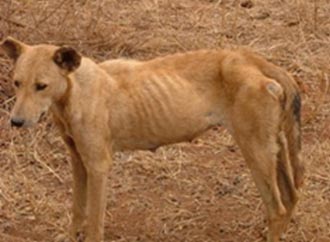
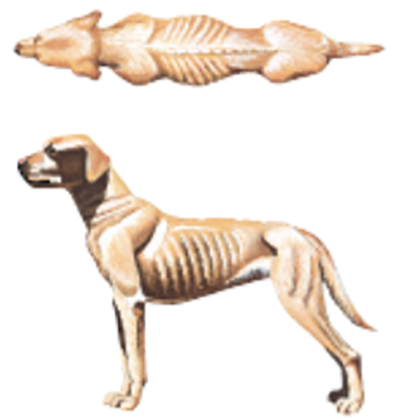
BCS 2 Thin
- Ribs visible but no backbone visible.
- Some body fat present.
- Abdominal tuck evident.
- Waist visible from above.
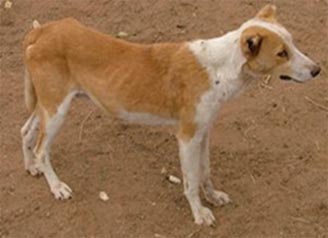
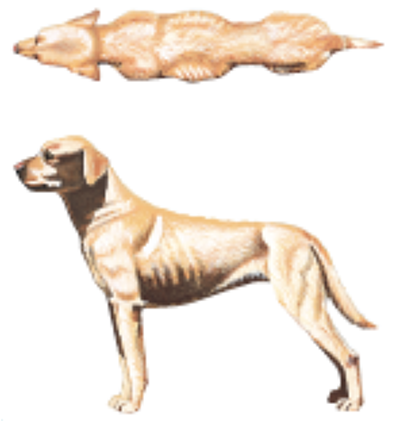
BCS 3 Ideal
- Ribs not visible even on close inspection.
- Waist visible from above.
- Abdominal tuck visible.
- Lower line of tummy slopes upwards from end of ribs to back leg.
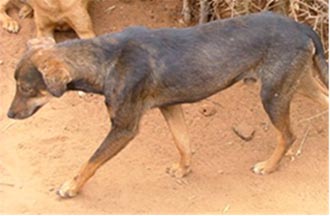
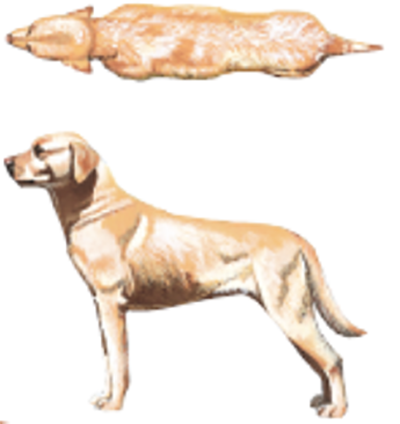
BCS 4 Overweight
- Waist barely visible from above.
- Abdomen slightly rounded, flanks concave.
- Lower line of tummy is horizontal from ribs to back leg.
- Moderate amount of fat – jiggle noted when walking.
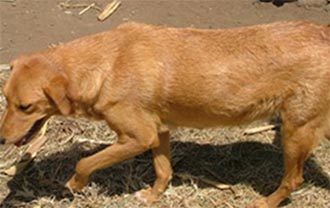
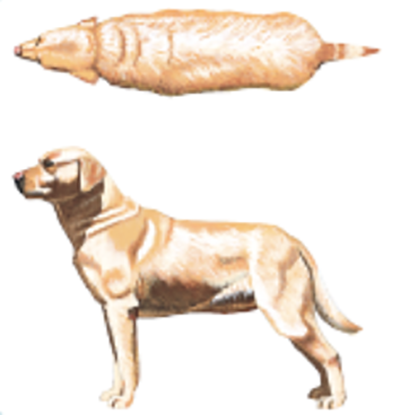
BCS 5 Obese
- Waist absent.
- Abdomen rounded.
- Lower line of tummy bulges downward.
- Sway from side to side when walking.
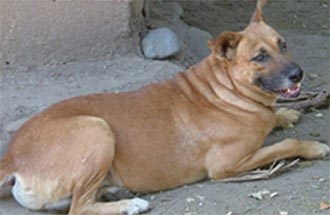
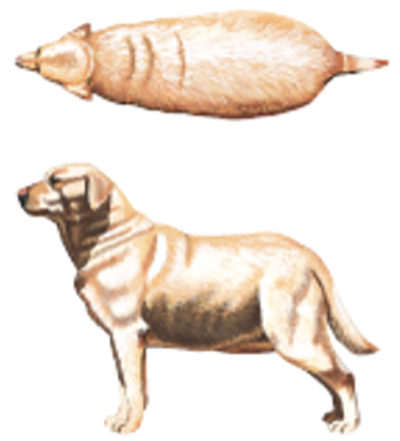
Scoring dog body condition
Body condition score is based on four main body areas; visibly check each one in turn to assess score:
- Backbone – if clearly visible score 1, if not visible check ribs
- Ribs – if clearly visible score 2, if not visible check abdominal tuck
- Abdominal tuck (area behind the rib cage where the abdomen is clearly smaller than the rib cage in score 3 and below) – if clearly visible score 3, if just visible score 4, if not at all visible score 5, then double check by viewing waist from above
- Note, do not include the final rib before the waist in your assessment, this may be visible on some dogs even if they have good fat covering due to conformation
- Waist from above – if clearly visible score 3, if just visible score 4, if no waist score 5
Acknowledgements for body condition scoring system
- Descriptors for 5-point body condition score amended to be observation only without palpitation from Food For Thought™ Technical Bulletin No. 77R; Innovative Research in Dog and Cat Nutrition™ (accessed from http://www.iams.com/pet-health/cat-article/how-to-visually-assess-cat-and-dog-body-condition#qa2 Jan 2014).
- Refinement of terms in descriptions and illustrations from Nestle Purina Body Condition System.
- Photos courtesy of Dr Darryn Knobel.
Training Set
What BCS are these dogs?
Review the photo of each dog to determine the BCS.
When you are ready, click the photo of the dog to reveal the answer.
1.) What BCS is this dog?
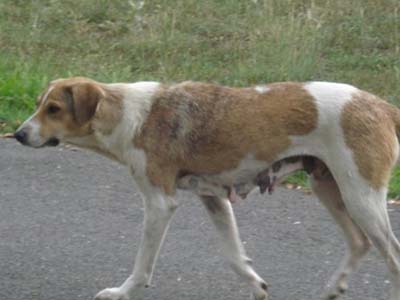
This dog has a BCS of 3. This dog's ribs are not visible. The abdominal tuck, which is the area behind the rib cage where the abdomen is clearly smaller than the rib cage, is visible. The lower line of this dog's tummy slops upwards from the end of the ribs to the back legs.
2.) What BCS is this dog?
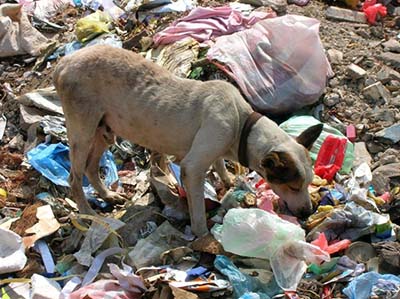
This dog has a BCS of 2. This dog's backbone is not visible, but his ribs are visible.
3.) What BCS is this dog?
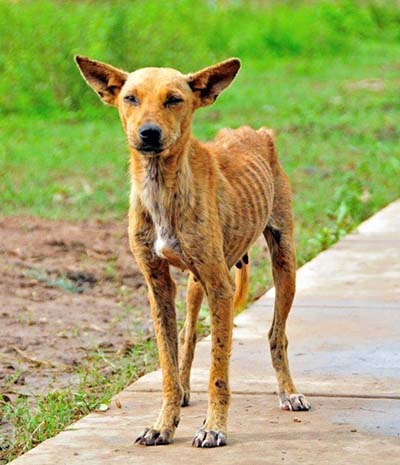
This dog has a BCS of 1. This dog's backbone, ribs, and pelvis are visible, and there is no body fat.
4.) What BCS is this dog?
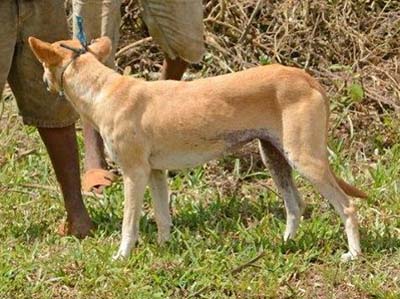
This dog has a BCS of 3. This dog's ribs are not visible. The abdominal tuck, which is the area behind the rib cage where the abdomen is clearly smaller than the rib cage, is visible. The lower line of this dog's tummy slops upwards from the end of the ribs to the back legs.
5.) What BCS is this dog?
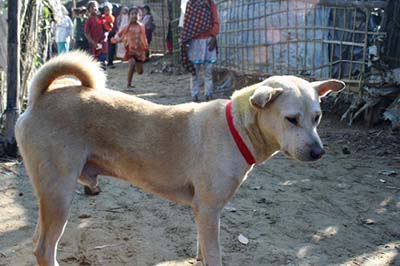
This dog has a BCS of 3. This dog's ribs are not visible. The abdominal tuck, which is the area behind the rib cage where the abdomen is clearly smaller than the rib cage, is visible. The lower line of this dog's tummy slops upwards from the end of the ribs to the back legs.
6.) What BCS is this dog?
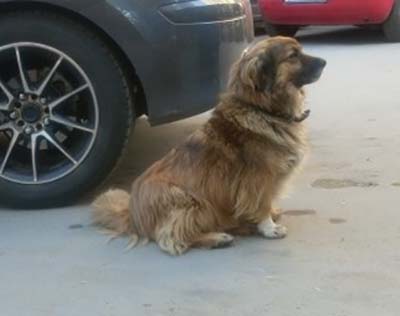
The BCS of this dog is unknown. This dog is too hairy to score reliably.
7.) What BCS is this dog?
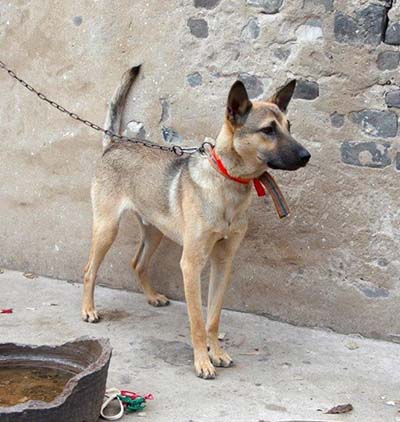
This dog has a BCS of 3. This dog's ribs are not visible. The abdominal tuck, which is the area behind the rib cage where the abdomen is clearly smaller than the rib cage, is visible. The lower line of this dog's tummy slops upwards from the end of the ribs to the back legs.
8.) What BCS is this dog?
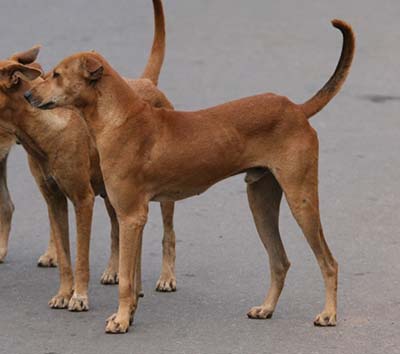
This dog has a BCS of 2. This dog's backbone is not visible, but his ribs are visible.
9.) What BCS is this dog?
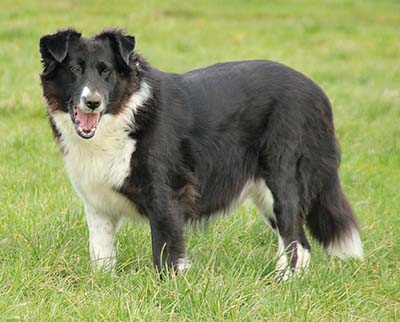
This dog has a BCS of 4. Even though this dog is very hairy, an assessment can be made. It is clear that this dog's abdomen is rounded, and the abdominal tuck is barely visible. The lower line of his tummy is horizontal from the ribs to the back legs.
10.) What BCS is this dog?
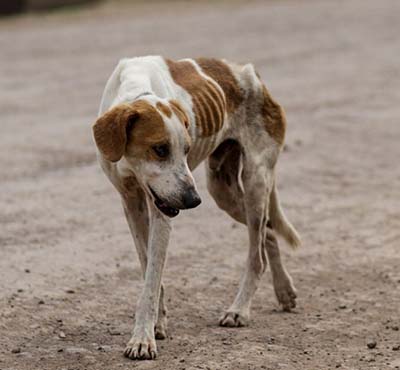
This dog has a BCS of 1. This dog's backbone, ribs, and pelvis are visible, and there is no body fat.
11.) What BCS is this dog?
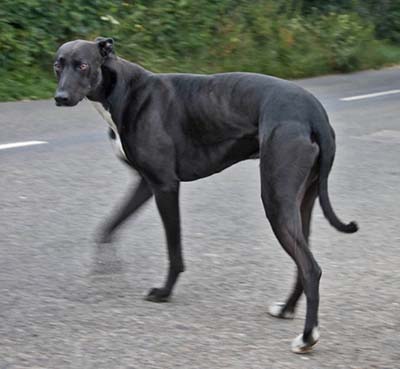
This dog has a BCS of 3. BCS is about fat coverage and not body shape. Although this greyhound has a very narrow conformation, the ribs are not visible. The abdominal tuck, which is the area behind the rib cage where the abdomen is clearly smaller than the rib cage, is visible. The lower line of this dog's tummy slops upwards from the end of the ribs to the back legs.
12.) What BCS is this dog?
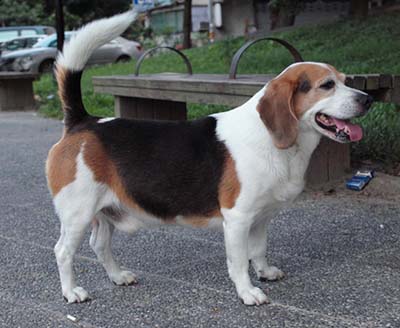
This dog has a BCS of 4. This dog's ribs are not visible and the abdomen is rounded. The abdominal tuck shows that the abdomen is barely smaller than the rib cage. The lower line of this dog's tummy is horizontal from the ribs to the back legs.
13.) What BCS is this dog?
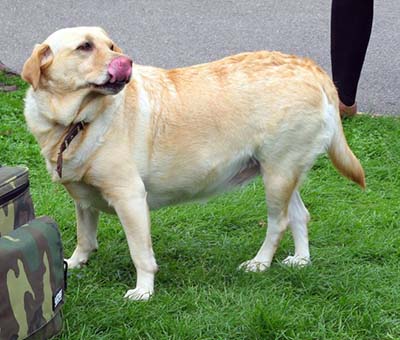
This dog has a BCS of 5. This dog's ribs are not visible. There is no waist to speak of. The abdomen is rounded, and there is no abdominal tuck, which means that the area behind the rib cage is just as wide as the rib cage. The lower line of this dog's tummy bulges downward.
14.) What BCS is this dog?
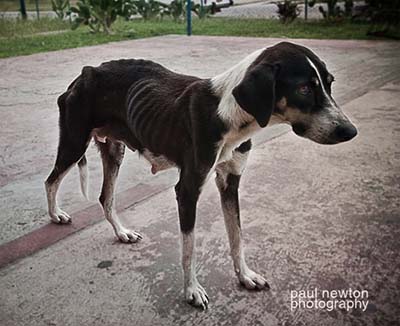
This dog has a BCS of 1. This dog's ribs, backbone, and pelvis are clearly visible.
15.) What BCS is this dog?
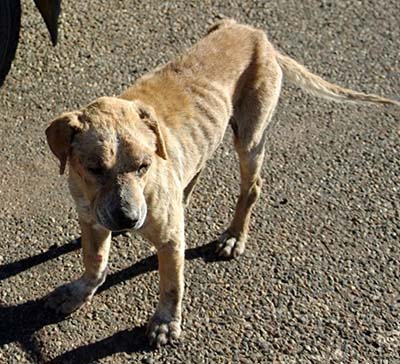
This dog has a BCS of 2. This dog's backbone is not visible, but the ribs are visible.
16.) What BCS is this dog?
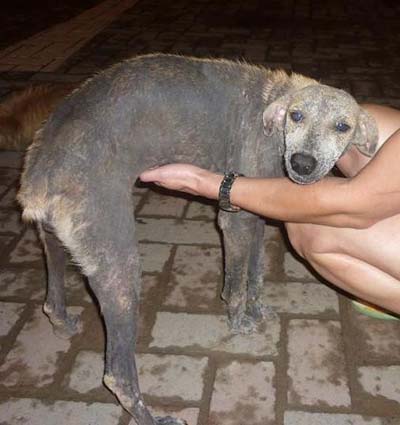
This dog has a BCS of 3. BCS is about fat coverage and not skin condition. Although this dog has a serious skin problem, the body fat coverage is ideal. This dog's ribs are not visible. The abdominal tuck, which is the area behind the rib cage where the abdomen is clearly smaller than the rib cage, is visible. The lower line of this dog's tummy slops upwards from the end of the ribs to the back legs.
17.) What BCS is this dog?
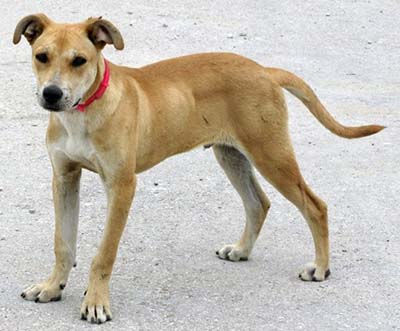
This dog has a BCS of 3. This dog has fewer than two ribs visible. (Note the final rib is visible but no others. This dog has ideal fat coverage but his conformation includes a widely sprung rib cage and this is responsible for the visible last rib as opposed to poor fat coverage as expected with BCS 2. The good fat coverage along his back also contributes to assigning a BCS of 3 as opposed to 2.) The abdominal tuck, which is the area behind the rib cage where the abdomen is clearly smaller than the rib cage, is visible. The lower line of this dog's tummy slops upwards from the end of the ribs to the back legs.
Thank you for reviewing the Dog Body Condition Scoring Using Visual Assessment presentation.
Are you ready to test your skills at making visual assessments of dog body conditions?
Take the Body Condition Scoring Assessment now. Else, click the right arrow to review this presentation again.